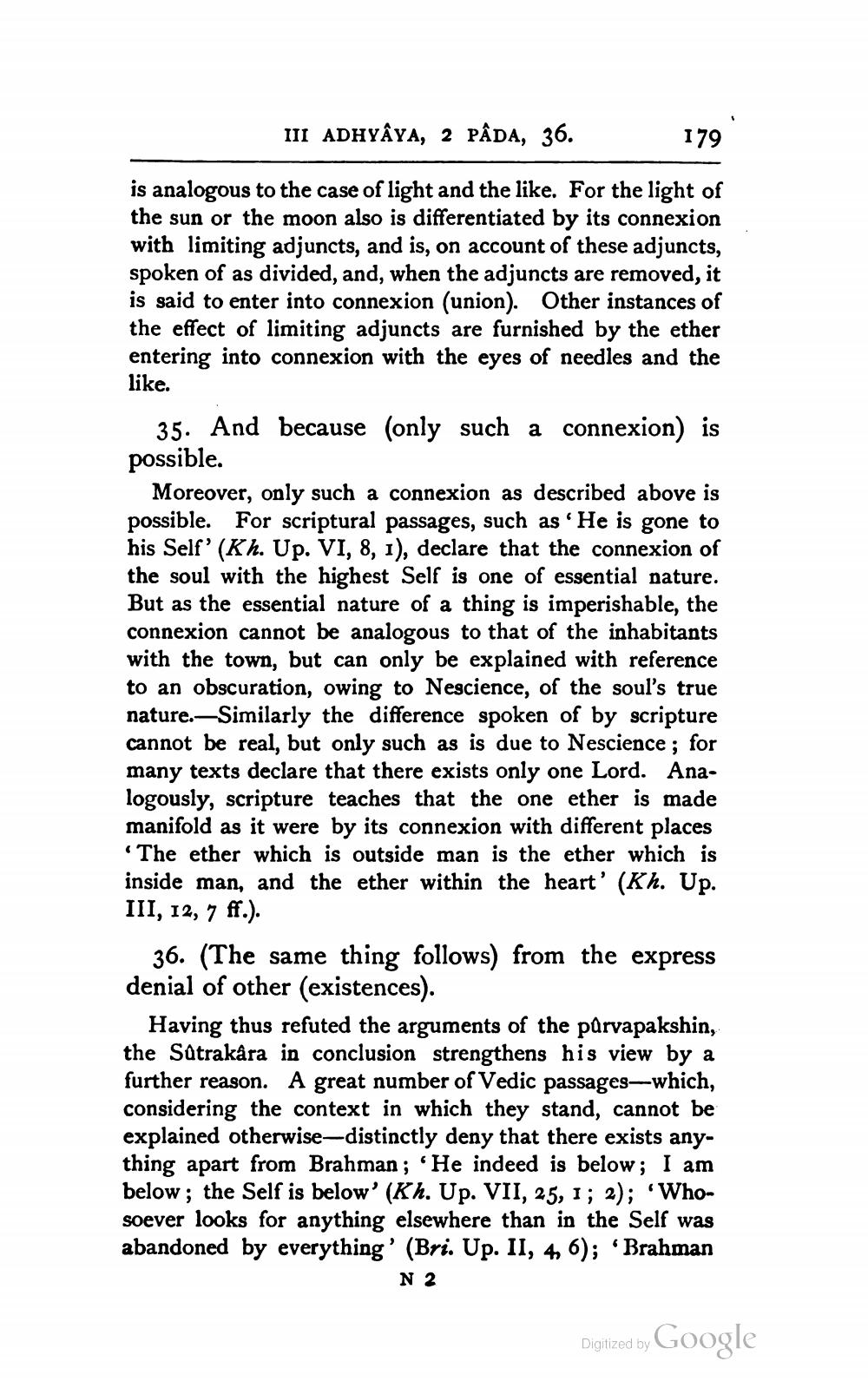________________
III ADHYAYA, 2 PÂDA, 36.
is analogous to the case of light and the like. For the light of the sun or the moon also is differentiated by its connexion with limiting adjuncts, and is, on account of these adjuncts, spoken of as divided, and, when the adjuncts are removed, it is said to enter into connexion (union). Other instances of the effect of limiting adjuncts are furnished by the ether entering into connexion with the eyes of needles and the like.
179
35. And because (only such a connexion) is possible.
Moreover, only such a connexion as described above is possible. For scriptural passages, such as 'He is gone to his Self' (Kh. Up. VI, 8, 1), declare that the connexion of the soul with the highest Self is one of essential nature. But as the essential nature of a thing is imperishable, the connexion cannot be analogous to that of the inhabitants with the town, but can only be explained with reference to an obscuration, owing to Nescience, of the soul's true nature. Similarly the difference spoken of by scripture cannot be real, but only such as is due to Nescience; for many texts declare that there exists only one Lord. Analogously, scripture teaches that the one ether is made manifold as it were by its connexion with different places 'The ether which is outside man is the ether which is inside man, and the ether within the heart' (Kh. Up. III, 12, 7 ff.).
36. (The same thing follows) from the express denial of other (existences).
Having thus refuted the arguments of the pûrvapakshin, the Sûtrakâra in conclusion strengthens his view by a further reason. A great number of Vedic passages-which, considering the context in which they stand, cannot be explained otherwise-distinctly deny that there exists anything apart from Brahman; 'He indeed is below; I am below; the Self is below' (Kh. Up. VII, 25, 1; 2); 'Whosoever looks for anything elsewhere than in the Self was abandoned by everything' (Bri. Up. II, 4, 6); 'Brahman
N 2
Digitized by
Google




